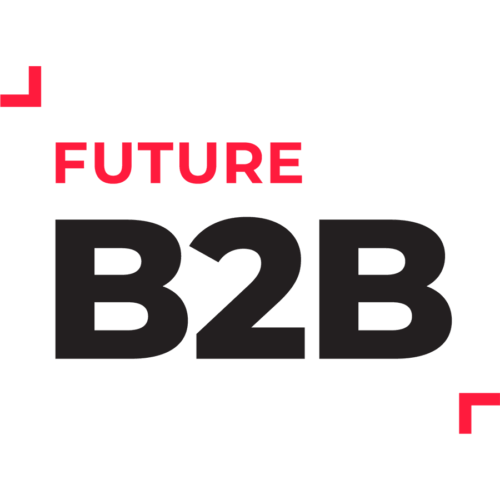The architecture, engineering, and construction (AEC) industry is heading into 2025 at a pivotal crossroads. On one side, opportunities abound in renewable energy, data centers and public infrastructure. On the other, pressing challenges such as labor shortages, rising material costs and hesitations around new technologies weigh heavily on the industry’s progress.
Future B2B, through its insights-driven division SmartBrief, has analyzed these dynamics in its latest report, Future Focus: The AEC Industry Outlook for 2025. With exclusive insights from industry experts like Ken Simonson (Associated General Contractors of America) and Kris Lengieza (Procore Technologies), the report outlines key trends and actionable strategies. But for AEC vendors aiming to connect with decision makers, this isn’t just an industry forecast—it’s a playbook.
Let’s explore how vendors can align their offerings with the industry’s evolving needs, strengthen their partnerships, and build trust with decision makers.
Understanding the Industry’s Pain Points
1. Labor Shortages (60.3%)
AEC firms face a lingering workforce crisis, with skilled labor retiring faster than new talent enters the field. Vendors that offer solutions to improve productivity or support workforce development—like training platforms, modular construction methods, or automation tools—will stand out.
2. Inflation and Material Prices (43.5%)
With rising costs eating into margins, decision makers are under pressure to optimize their budgets. Vendors can win favor by offering innovative materials, cost-effective procurement strategies, or technologies that streamline project management.
3. Supply Chain Volatility (22.0%)
While less severe than during the pandemic, supply chain disruptions persist. Reliable partnerships and just-in-time delivery solutions could help vendors demonstrate their value in navigating these uncertainties.
For AEC vendors, addressing these challenges is more than a transaction—it’s about demonstrating commitment to solving the industry’s most critical issues.
Where the Opportunities Lie
Amid these complexities, certain markets are ripe for growth. Vendors targeting these areas can position themselves as indispensable partners:
- Data Centers: As digital infrastructure expands, demand for construction services in this sector continues to grow.
- Renewable Energy: Government incentives and private investments are fueling projects in solar, wind, and other green technologies.
- Public Infrastructure: Sustained investments in highways, water systems, and transportation projects present a steady pipeline of work.
Ken Simonson encapsulates this duality: “We’re seeing growth opportunities, especially in infrastructure and data centers, but labor constraints and regulatory confusion will continue to be significant headwinds.”
For vendors, aligning offerings with these high-demand sectors can make all the difference.
Bridging the Gap: Vendors and Technology Adoption
Technology stands as both a promise and a point of hesitation for the AEC industry. While tools like drones, Building Information Modeling (BIM), and project management software are gaining traction, decision makers remain skeptical about emerging innovations like artificial intelligence and autonomous machinery.
Kris Lengieza from Procore Technologies notes that vendors must prioritize building trust through tangible case studies and clear ROI demonstrations. Vendors who position themselves not as product sellers but as collaborative problem-solvers can overcome adoption barriers.
Strategies for Vendors to Succeed in 2025
1. Address Labor Shortages with Scalable Solutions
- Offer tools or services that enhance workforce efficiency or attract new talent.
- Partner with educational institutions to support skills development.
2. Mitigate Cost Pressures
- Provide value engineering solutions to help firms meet budgets without compromising quality.
- Leverage data to predict and manage price volatility in materials.
3. Build Supply Chain Resilience
- Focus on reliability and transparent communication to ease logistical challenges.
- Proactively address potential disruptions with contingency strategies.
4. Showcase Technology’s Tangible Impact
- Share case studies that highlight measurable improvements.
- Provide hands-on demonstrations to build confidence among skeptical decision makers.
Looking Ahead: Building Partnerships for Sustainable Growth
With nearly 58.5% of AEC leaders optimistic about their key markets by 2025, the industry is poised for transformation. For vendors, this means stepping into a partnership role, aligning solutions with client goals, and demonstrating adaptability in the face of uncertainty.
By addressing the challenges head-on—through labor-focused solutions, inflation mitigation, and strategic technology adoption—vendors can position themselves as trusted advisors. The AEC industry is ready for growth, and those vendors who embrace innovation while staying attuned to client needs will lead the charge.
Download the Report
For a deeper dive into the AEC industry’s outlook and actionable insights for vendors, download Future Focus: The AEC Industry Outlook for 2025. Stay informed by subscribing to SmartBrief’s tailored newsletters, covering over 30 infrastructure topics.




